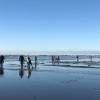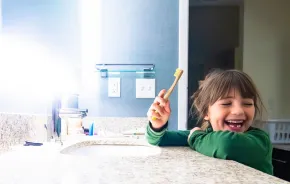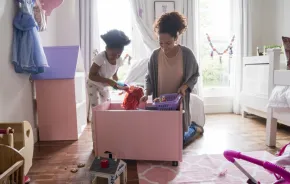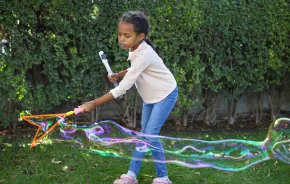 Here's why the Museum of Flight's Space Shuttle Trainer exhibit, which opened Saturday, is so cool: This is the one and only full-scale mockup of the space shuttle orbiter astronauts used in training.
Here's why the Museum of Flight's Space Shuttle Trainer exhibit, which opened Saturday, is so cool: This is the one and only full-scale mockup of the space shuttle orbiter astronauts used in training.
NASA built the trainer at Johnson Space Center in Houston during the 1970s and used it to train the astronauts in procedures like extra-vehicular activity, emergency egress, in-flight maintenance, stowage familiarity and housekeeping procedures. In other words, they got to practice how to squeeze seven astronauts into a sardine-can sized workplace and still get their jobs done.
The exterior of the120-foot-long, 19-foot-wide, 23.5-foot high trainer is made of a wood frame and plywood panels and replicates the shuttle in every way, minus the wings. Visitors to the exhibit can walk right up to the trainer, look up and see all the scratches and scuffs from three decades of astronauts egressing (or, in regular-person speak, jumping out of the window).
It has three main parts: the flight deck, mid-deck, and payload bay. All visitors can walk up the stairs (added for the exhibit) and get into the payload bay where they can peek through the airlock into the mid-deck.
 Tour of the crew compartment
Tour of the crew compartment
Starting Saturday, November 17 visitors can get an even closer look. On weekends, the museum will offer an exclusive tour of the Trainer crew compartment -- the flight deck and the mid-deck. The crew compartment is only 28.75 feet by 19 feet by 23 feet, and remember, that's for seven people for ten days. The entry is through a round door (you have to get on your knees to crawl through) and leads to the mid-deck where the crew spent their time, stowed their gear and equipment, prepared meals and took care of other, um, personal business (see photo below). A ladder leads to the flight deck where there are over two thousand buttons and switches, two seats and the windows.
The trainer was not used as a simulator, meaning the buttons don't do anything, but as a way for the astronauts to familiarize themselves with the psychical space and the limitations of the crowded quarters. Squeezing in there, looking through the small windows is a goosebump experience -- every crew in the space shuttle program spent time in that trainer. The tour includes an interactive robotics experience with a chance to try out the Canadarm, the mechanical arm used to maneuver  payload in and out of the payload bay.
payload in and out of the payload bay.
The Space Shuttle Trainer is not just an exhibit. It's an artifact that visitors can touch and climb inside, experiencing history first hand.
The exhibit is housed in the 15,500-square-foot Charles Simonyi Space Gallery at the Museum of Flight which also showcases the Soyuz TMA-14 spacecraft, Blue Origin's Charon flying vehicle, and other informational exhibits about astronaut training, the future of spaceflight and an exhibit commemorating the Challenger.
If you go . . .
Where: The Museum of Flight, 9404 East Marginal Way S., Seattle. There is free parking adjacent to the Museum and Airpark. By bus, take Metro Route #124.
Admission: $7–$17. On the first Thursday of each month, entrance is free from 5–9 p.m. (Next free first Thursday one is Dec. 6.)
Hours: Daily 10 a.m.–5 p.m.; first Thursday of each month 10 a.m.–9 p.m.
Tours of the Shuttle Trainer: Weekends and holidays, 11 a.m., 12:30 p.m., 2 p.m.; cost $20-$30. Buy tickets online. Tours are best for ages 10 and up. You can check out the Museum Visitor Guidelines before you go.
Photo credits: Top photo courtesy of the Museum of Flight; others by Emily M. Smith.
About the author: Emily Metcalfe Smith lives, writes and parents in Edmonds, Washington, and thought seeing the inside of the Space Shuttle Trainer with her two young boys (and one not-so-young) was one of the coolest things she's done in quite awhile.











